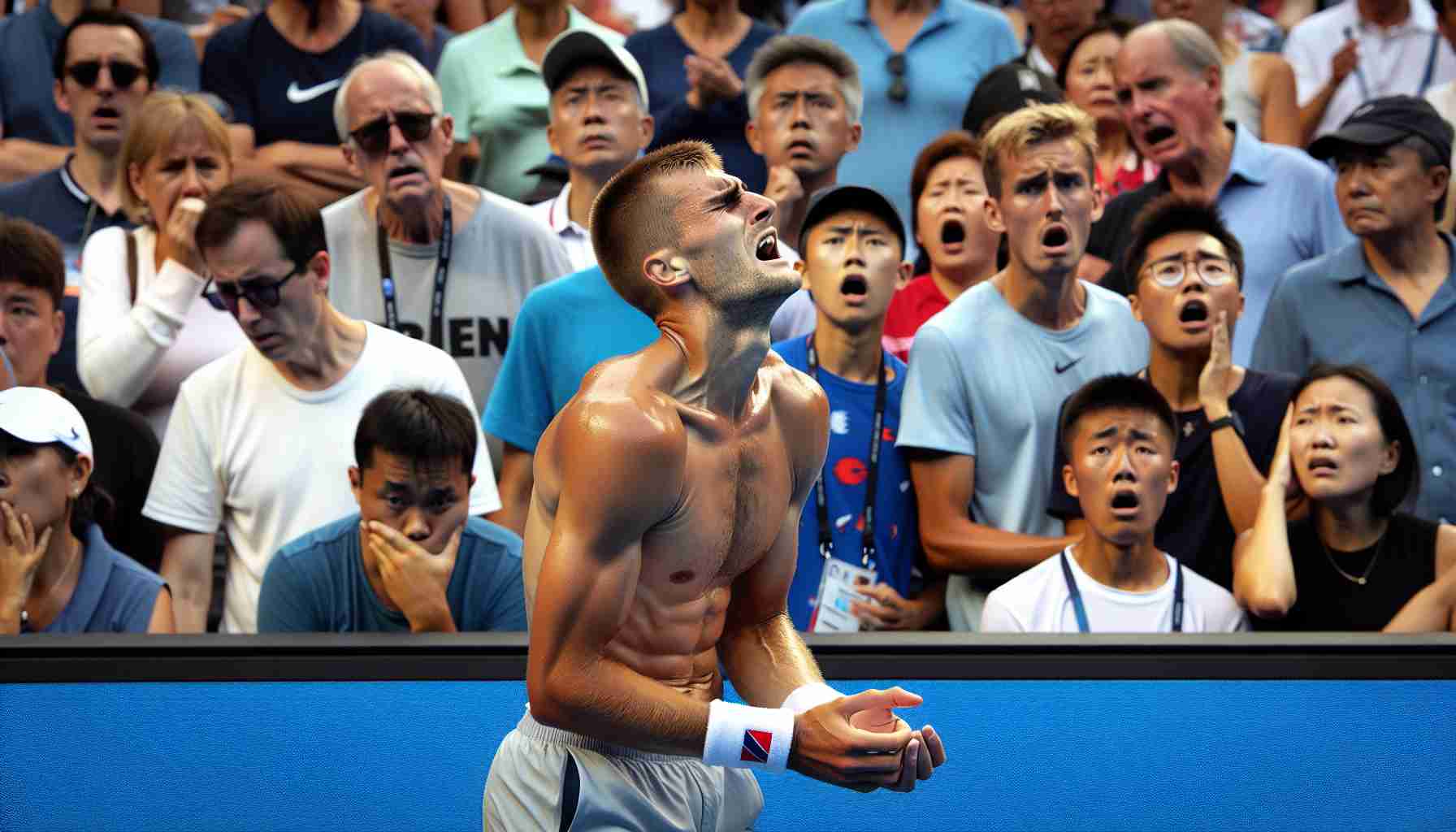MELBOURNE, Australia — In a stunning turn of events, the tennis world watched as 24-time Grand Slam champion Novak Djokovic withdrew from his semifinal match at the Australian Open against Alexander Zverev due to a significant muscle tear in his left leg.
After a grueling first set that stretched 81 minutes and concluded in a tiebreak, Djokovic, visibly hampered by an injury, approached the net to concede defeat. Expressing profound disappointment, he later shared that he had employed various methods, including medication and physiotherapy, but the pain became unbearable. He acknowledged that even if he had taken the first set, sustaining his physical condition for the remainder of the match would have been a monumental challenge.
Following the match, Djokovic, seeking to maintain a positive demeanor amidst the crowd’s boos, acknowledged their frustration yet offered them a thumbs-up. Zverev, who secured his spot in the final to face defending champion Jannik Sinner, urged fans to respect Djokovic’s situation, highlighting the champion’s past resilience in overcoming injuries.
At 37, Djokovic finds himself confronting yet another injury setback, marking the second time he has exited a Grand Slam in the last year due to health issues. He plans to evaluate the severity of his condition with his medical team and remains hopeful about his recovery before upcoming tournaments.
The Broader Implications of Djokovic’s Injury
The recent withdrawal of Novak Djokovic from the Australian Open due to a severe muscle tear raises significant questions about the state of professional sports, particularly tennis, in an era increasingly defined by physical strain and injury management. As athletes push the boundaries of human performance, the risks associated with high-level competition intensify, both for individual careers and the sports themselves. Djokovic’s situation underscores a larger trend in athletics where injury prevention and recovery protocols are becoming paramount, impacting not only player longevity but also fan engagement and economic viability.
Societal responses to such incidents can reveal deep-rooted cultural attitudes toward athleticism. Djokovic, a globally celebrated figure, represents the pinnacle of hard work and perseverance. His withdrawal often incites disappointment among fans, reflecting a broader cultural expectation for athletes to perform regardless of adversity. This moment invites a reflection on the balance between spectacle and athlete welfare, pushing organizations to reconsider how they define sportsmanship.
Moreover, the financial implications extend beyond Djokovic himself. Major tournaments navigate the delicate interplay between star power and commercial success, as injuries can lead to significant drops in audience turnout and viewership. As television rights and sponsorship dollars flow heavily based on the presence of marquee players, organizers must adapt to the reality of frequent injuries in elite performance sports. Looking ahead, these factors might drive a more sustainable approach to athlete health, influencing how the global sports economy evolves in response to ever-increasing demands on sporting superstars.
Djokovic’s Shocking Withdrawal: What It Means for the Tennis World
The Withdrawal of Novak Djokovic
In an unexpected turn of events, 24-time Grand Slam champion Novak Djokovic withdrew from his semifinal match at the Australian Open against Alexander Zverev due to a serious muscle tear in his left leg. This incident has raised significant concerns within the tennis community and has implications for upcoming tournaments.
Health and Recovery Insights
1. Injury Details: Djokovic’s injury, described as a significant muscle tear, reflects the physical toll professional tennis exacts on athletes. Such injuries often require extensive rehabilitation, including rest, physiotherapy, and possibly surgery.
2. Impact on Performance: Players at Djokovic’s level face immense physical demands. The tour’s rigorous schedule often leads to injuries, and recovery protocols can vary significantly. Injuries can affect not only performance in immediate matches but also overall rankings and future participation in tournaments.
3. Future Tournaments: Djokovic’s ability to compete in upcoming events depends on the recovery timeline from his muscle tear. His medical team will likely assess the damage and prescribe a rehabilitation plan. Given the intensity of competition, any prolonged absence could affect his seedings and chances at future tournaments.
Pros and Cons of Djokovic’s Resilience
Pros:
– Experience: Djokovic’s history of overcoming injuries showcases his resilience and determination, which may aid his recovery and return to form.
– Fan Support: The tennis community is typically supportive during such setbacks, and Djokovic’s reputation may shield him from any backlash during recovery.
Cons:
– Age Factor: At 37, recovery times can be longer and more complicated, presenting challenges for Djokovic as he navigates his fitness.
– Risk of Further Injuries: Pushing too hard too soon could result in further injuries, which is a significant risk for aging athletes.
Comparing Djokovic with Jordan vs. LeBron’s Longevity
As discussions about athlete longevity grow, comparisons are often drawn between athletes like Djokovic and renowned figures in sports such as Michael Jordan and LeBron James. Both Jordan and LeBron faced injuries but adapted their playstyles to mitigate future risks, a move Djokovic may need to consider moving forward.
Current Trends and Market Analysis
1. Injury Management Trends: Recent trends in professional sports show a growing focus on injury prevention and rehabilitation. Technologies such as advanced physiotherapy techniques, wearable health devices, and personalized recovery programs are becoming standard.
2. Fan Engagement: Despite his injury, Djokovic’s engagement with fans, even during difficult moments, reflects a growing trend among athletes to maintain a positive public image while addressing personal challenges.
Concluding Thoughts
Novak Djokovic’s withdrawal from the Australian Open serves as a poignant reminder of the physical demands placed upon elite athletes. As he assesses his recovery and prepares for the future, the community will be watching closely to see how he navigates this challenging period.
For more details on athlete health, recovery strategies, and tennis tournament updates, visit tennis.com.









